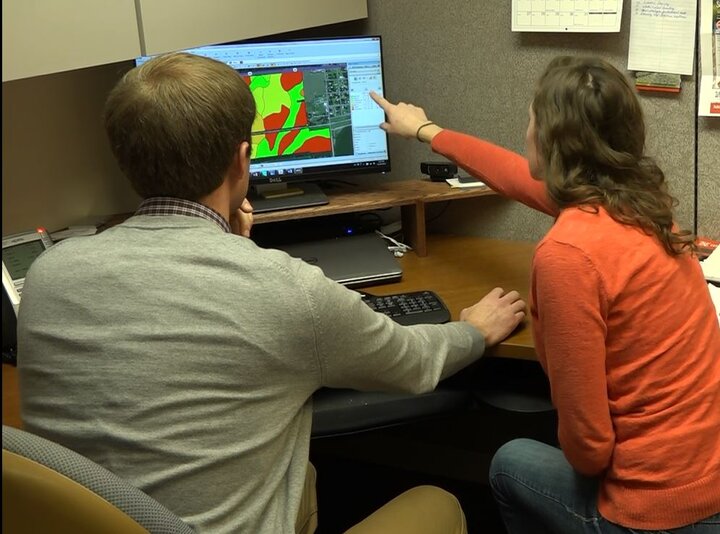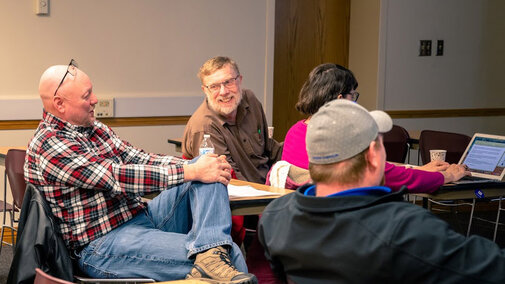
The Nebraska On-Farm Research Network traces its origins to a group of producers conducting collaborative research in east-central Nebraska in 1990. Over the years, the project has grown into a statewide network, working with crop producers and crop advisors to research various issues of importance for corn, soybean, wheat, and dry edible bean production. Over 140 farmers have participated over the years, and many have participated for numerous years. A recent study was conducted to find out why farmers participated in an on-farm research program. The study also examined the impact of participation. The study was conducted by interviewing 40 of the past participants of the Nebraska On-Farm Research Network.
Key findings and highlights of the study are presented in this article. You can view the complete study results in this Agronomy Journal article, Farmers as Researchers: In-depth Interviews to Discern Participant Motivation and Impact.
Why did farmers participate?
Hear from six growers participating in the Nebraska On-Farm Research Network about why they're doing it and what they learned from it. (4:22 min)
The most popular reasons for participating were that they:
- had questions they wanted answers to, and they believed finding these answers would increase productivity;
- described themselves as “curious” or “interested in learning;”
- were seeking economic gains, and specifically were interested in testing a new product, technique, or crop;
- wanted reliable, unbiased research results;
- were asked to participate; and
- wanted the opportunity to work with the university.
How did they use their results?
Made a change in the operation:
- 23 of the 40 farmers put their results into practice by making a change in their operation.
- 7 of the 40 said they put their results into practice by not making a change, as the results confirmed what they were already doing.
Economic gains:
- By putting their results into practices, on average, farmer participants saved $15.43/acre.
- Others reported the economic impact of utilizing the research results in terms of amount gained. On average the amount gained was $31.23/ac.
Sharing the results:
- 34 of the 40 shared their results with someone else.
What was their experience?
The majority reported positive experiences working with the Nebraska On-Farm Research Network.
- They liked the university faculty they worked with. According to one person, the best thing about the program was, “…the people I was working with. They were responsive to my needs, understanding to the problems that arose, and generous in the giving of research data.”
- They found the publications (annual research report) valuable.
- They enjoyed the interactions at the annual research result update meetings. “At annual meetings we get to talk to others, share with others. Without that, it would be half the value.”
- On average, participants spent 16 hours on their studies annually. The time requirement ranged from no additional time to several days.
- They felt confident in the reliability of the project results and the statistical analysis. They found the results trustworthy and unbiased. “One of the most important things I learned was how to look at the data that we look at. The trials were always repeated and random and that skill came from the university expertise.”
The study also examined the use of technology in conducting on-farm research over the years and how the origin of the research idea impacts the success of the project.
To find out more about the Nebraska On-Farm Research Network and learn how you can get involved, visit: https://cropwatch.unl.edu/farmresearch
The Nebraska On-Farm Research Network is a sponsored by Nebraska Extension, in partnership with the Nebraska Corn Board, the Nebraska Corn Growers Association, the Nebraska Soybean Checkoff, and the Nebraska Dry Bean Commission.
Funding for this study was provided in part by the Social and Behavioral Sciences Research Consortium. Interviews and qualitative data analysis was conducted by the UNL Bureau of Sociological Research. Assistance with quantitative data analysis was provided by the UNL Department of Statistics.

